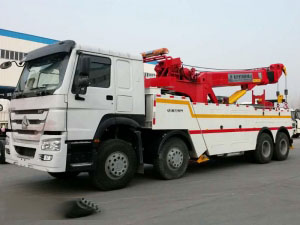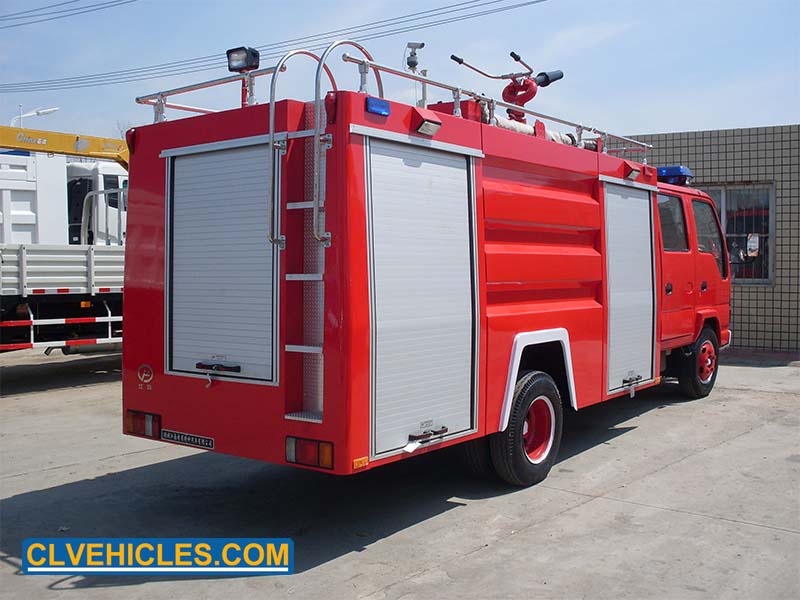
This wrecker has the functions of lifting, pulling, lifting, etc. It is convenient, quick, good-looking, safe and reliable. This truck wrecker is widely used in highways, public security traffic police, airports, terminals, auto repair industry and highway companies, etc.

Wrecker truck equipped with lifting winch device and wheel bracket which can lift, towing, back load and transport.Widely used in road, police traffic, airports, docks, auto repair company, industry and highway departments, timely, fast clean-up accident, failure, illegal and other vehicles.

Road wrecker is used for safety salvage of vehicles subject to city road, suburb way, highway, airport and bridge road. It is suitable for medium and small-sized cargos, cars and other special vehicles, which are allowed within the technical parameters of this kind

The tow wrecker is called the road wrecker, also known as road rescue vehicle. It has many functions such as lifting, pulling and lifting traction.

The INT series is out integrated line of tow trucks commonly called wreckers. We have a wide range of products with 6 different models ranging for the small 3 ton to the massive 60 ton with a 3 stage boom.
Correct operation and rational use of fire-fighting vehicles and various fire-fighting special equipment and equipment are important links to give full play to the functions of fire-fighting vehicles and quickly complete fire-fighting battles and rescue missions. The following is an introduction to the daily inspection and maintenance of fire trucks:
1. Maintenance of fire pumps.
The fire pump is the main part of the fire truck. The maintenance of fire pumps directly affects the effectiveness of fire-fighting operations. Therefore, you must be careful during the inspection and maintenance of the fire pump, and troubleshooting should be promptly eliminated if any faults are found. Generally, every rotating part of a fire pump should be filled with grease once every 3 to 6 hours of operation. Main technical parameters such as the maximum water suction depth, water diversion time, and maximum flow rate of the fire pump should be tested regularly. If there is a large difference from the normal performance, it should be checked and eliminated. During inspection and maintenance, attention should be paid to the following conditions: If unclean water sources are used, the water pump, water tank and pipelines should be cleaned; after using foam, the water pump, foam proportioning mixer and connecting pipelines should be cleaned in time; clean the inside of the pump , there is water in the pipeline; the water ring pump diversion tank, scraper pump oil storage tank, water tank, and foam tank must be filled if they are insufficient; check the water cannon or foam cannon ball valve base, clean the moving parts and apply a little butter to lubricate them; clean the water diversion pump Check the oil in the gear box promptly. If the oil deteriorates (the oil turns milky white) or is missing, it should be replaced or replenished in time.

2. Inspection and maintenance of fire truck tanks.
Since the fire truck tank has been fully loaded with fire extinguishing agent for a long time, the immersion of the fire extinguishing agent will cause certain corrosion to the tank. Especially for some fire trucks that have been in service for a long time, if they cannot be inspected and maintained in time, the rust spots will expand and even rust. Through the tank, the rust residue that falls off will be washed into the water pump when the fire truck discharges water, damaging the impeller and causing the water pump to not work properly. Especially for the tanks of foam fire trucks, due to the high corrosiveness of the foam, if they are not inspected and maintained regularly, not only will the tank be easily rusted, but the pipes will also be clogged and the foam will not be transported normally, resulting in the failure of fire-fighting and rescue operations. Therefore, regular inspections of fire truck tanks should be organized. Once corrosion is found, effective measures should be taken promptly to prevent the expansion of rust spots. The common treatment method is to clean the rusted parts, dry them and then apply composite epoxy resin paint or repair welding. Valves and pipelines in other parts related to the tank should also be inspected and cleaned regularly, and any problems found should be dealt with accordingly.

3. The quality of fire truck condition inspection and maintenance directly affects the success or failure of fire-fighting operations and the life safety of combatants.
The main contents of the vehicle condition inspection include: whether the bolts on the clutch, transmission, drive shaft, universal joint, reducer, differential, axle shaft and other components on the transmission system are loose, damaged, and lack of oil; whether the brake pedal on the brake system is loose or damaged; Flexibility, the working condition of the air compressor, whether the air reservoir is intact, whether the brake valve is flexible, the wear condition of the wheel brake pads; whether the steering gear is working normally and the working conditions of important components such as lights, wipers, and brake indicators. The faults detected should be eliminated in time. If the clutch does not separate, the drive shaft, universal joint, reducer, differential, and half-shaft bolts should be inspected and adjusted in time. If the bolts are loose or short of oil, they should be tightened and lubricated in time.

4. Inspection and maintenance of power take-off and transmission shaft.
Whether the power take-off and the water pump drive shaft are easy to use is the key to whether the fire truck can absorb and discharge water. It is necessary to regularly check whether the power take-off is operating normally, whether there are any abnormal noises, whether the gear shifting and separation are smooth, and whether there is automatic disengagement. Check and maintain it if necessary. It is necessary to check whether there are any abnormal noises in the water pump drive shaft, whether the fastening parts are loose or damaged, whether each cross section of the drive shaft and the bearings need to be filled with grease, and if necessary, tighten the bolts and add grease.


 online service
online service 01-234547894
01-234547894 0081-7001101444
0081-7001101444 info@heritagetrucksolution.com
info@heritagetrucksolution.com truck0809
truck0809 01-2345478945
01-2345478945